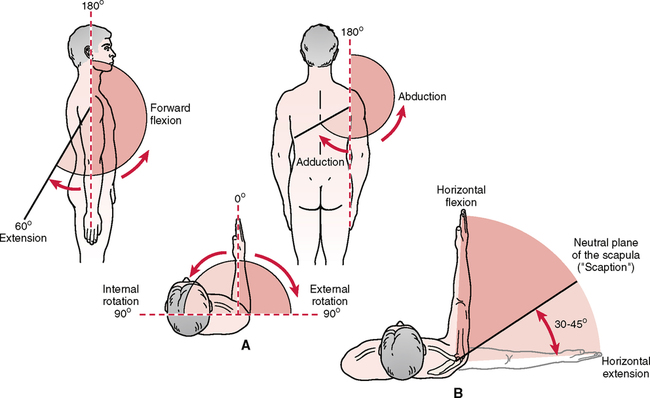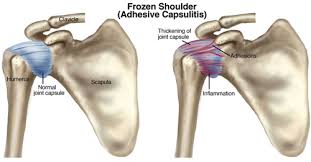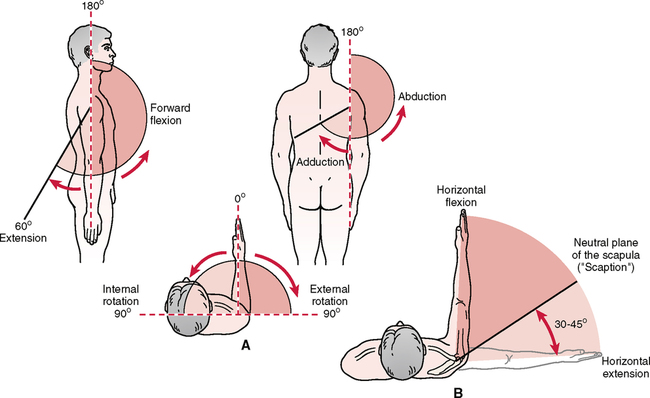Adhesive capsulitis, also known as ‘Frozen shoulder’ or ‘stiff shoulder’ is a painful and extremely limiting condition that results in an inability to get full active AND passive range of motion/movement (AROM and PROM) at the shoulder joint. It’s most commonly seen in an inability to abduct (lift the arm up from the side of the body) and externally rotate.
The actions of throwing a ball, giving a high-five, scratching your back, getting dressed and overhead activities can become difficult and limiting for those with adhesive capsulitis.

Source: Musculoskeletal Key
What is Adhesive Capsulitis?
There is still discrepancy as to what the pathology of adhesive capsulitis is, however, adhesive capsulitis has been seen to usually occur as a combination of synovial inflammation/synovitis and capsular fibrosis/contracture. Since the shoulder joint is a synovial joint, it is lined by a synovium (synovial membrane and synovial fluid which works to lubricate the joint). Synovitis occurs when the synovium thickens and becomes engorged with fluid, causing inflammation. This can then make the joint less movable and hence stiff.

Source: Prahran Sports Medicine
Additionally, capsular fibrosis, which is essentially a stiffening of the ligaments surrounding the shoulder joint can play a role in adhesive capsulitis.
Adhesive capsulitis has a long course and can last around 18-24 months of pain that progresses to stiffness and eventually range of motion improvements.
The Cause/Risk Factors
There are many causes for adhesive capsulitis and it can be both spontaneous without preceding cause or it can be a result of a disease or event. Risk factors may include diabetes, having a low BMI or being underweight, tendinopathies of the rotator cuff and biceps muscles as well as having previous rotator cuff surgery or pathologies that result in an immobilised shoulder for a period of time.
How to Know if you Might Have Adhesive Capsulitis
- Type of pain: the pain is dull and aching but severe and sharp with rapid/reactive movements
- Timing of pain: If you find that you have constant night pain because of the shoulder, pain with quick movements, pain when lying on the shoulder or if the pain is easily aggravated by simple movements
- Range of movement: if you can’t move your shoulder in all the directions and as much as the other shoulder
Treatment
Particularly when trying to avoid adhesive capsulitis after rotator cuff surgery or injury, it’s important to keep the joint moving and mobilised. Since the area is still sensitive after these experiences, it’s a good idea to have a myotherapist mobilising the joint. The myotherapist might use manual mobilising techniques to increase the ROM of the joint whilst keeping the healing the process undisturbed.
Home passive stretching can also work to increase ROM and assisted active ROM exercises. These also can be guided by a myotherapist to ensure stretching of the correct areas is achieved.
A last-resort treatment can include surgery, however it is rarely required and only necessary in severe cases where myotherapy or therapy cannot improve the condition.

